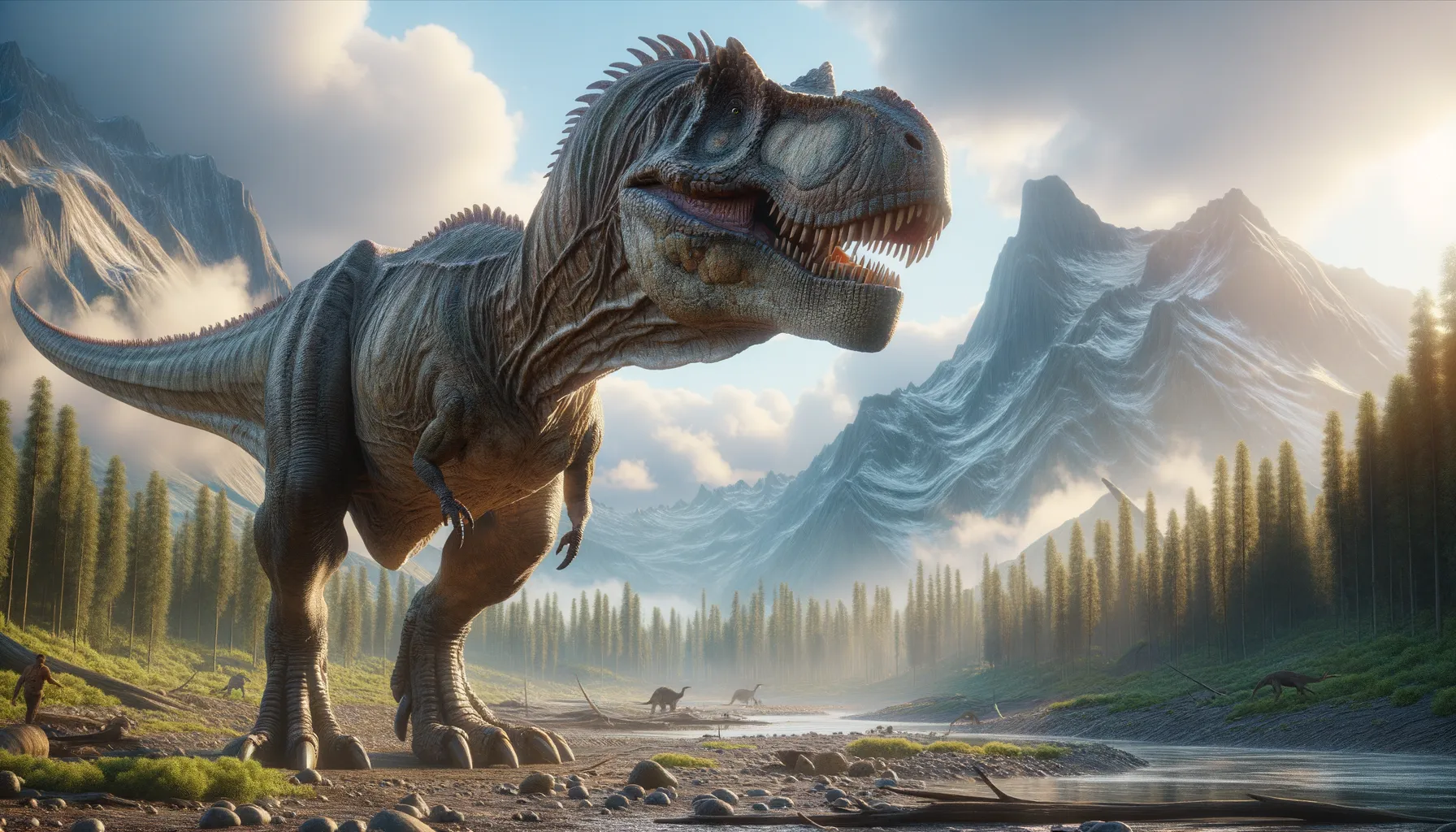
Giganotosaurus
The prehistoric titan of speed and might.
Period
Cretaceous
Length
Around 40 to 43 feet long.
Height
Up to 13 feet at the hips.
Weight
Approximately 8 tons.
Giganotosaurus was one of the largest meat-eating dinosaurs that roamed the Earth during the Late Cretaceous period. With its towering height and formidable jaw, it was a top predator in its ecosystem. It is closely related to other giant theropods like Carcharodontosaurus. Discovered in Patagonia, Giganotosaurus has captured the imagination of paleontologists and dinosaur enthusiasts alike due to its massive size and power.
Diet
Giganotosaurus was a carnivore, primarily preying on large herbivorous dinosaurs. Its diet likely included the massive titanosaurs that shared its environment.
Hunting
This predator probably hunted in packs to take down large prey. It may have used its speed and agility to ambush or chase down its victims.
Environmental challenges
Giganotosaurus faced the challenge of competing for resources in its ecosystem. The Cretaceous period saw fluctuations in climate, altering food availability and requiring adaptability. Competition with other large predators also posed a constant threat. Surviving in a dangerous world meant continually adapting to both climatic changes and the ever-present threat of rival predators.
Speed
Estimated around 31 miles per hour.
Lifespan
Could have been around 30 to 40 years.
First discovery
Discovered in 1993 in Argentina.
Fun Facts
- Giganotosaurus was one of the largest meat-eating dinosaurs, measuring up to 40 feet in length.
- The name 'Giganotosaurus' means 'giant southern lizard,' indicating its massive size and the region where its fossils were found.
- It lived approximately 98 million years ago during the Late Cretaceous period, in what is now Argentina.
- Giganotosaurus had a massive skull, which could be as long as 6 feet, filled with sharp teeth perfect for hunting.
- Despite its size, Giganotosaurus was likely a fast creature and could possibly run up to 31 miles per hour.
- The first Giganotosaurus fossils were discovered in 1993, making it a relatively new addition to our knowledge of dinosaurs.
- Some scientists believe Giganotosaurus might have hunted in packs to take down large prey like the long-necked dinosaur Argentinosaurus.
Growth and Development
Giganotosaurus likely underwent a rapid growth spurt during its juvenile years. As it matured, its bones and muscles developed to support its massive body. Like other theropods, it would have needed a significant amount of food to fuel its growth. Its ability to reach such a large size was key to its success as a predator.
Habitat
This dinosaur inhabited the lush and diverse landscape of what is now South America. During the Cretaceous period, its habitat was rich in vegetation and abundant with potential prey. The region was a mix of forests, rivers, and open plains, providing ample opportunities for both hunting and hiding. These conditions contributed to a thriving ecosystem in which Giganotosaurus was a dominant player.
Interaction with other species
Giganotosaurus likely competed fiercely with other large predators for food resources. It may have also scavenged the kills of other dinosaurs when opportunities arose. Its interactions with other species were centered around predation, competition, and possibly complex social dynamics involving cooperation with others of its kind. Adaptation to these interactions was crucial for its survival.
Natural lifespan
Its natural lifespan was estimated to be similar to other large theropods, perhaps up to 40 years.
Reproduction
Giganotosaurus likely reproduced by laying eggs in nests, as most dinosaurs did. These nests might have been in isolated or protected areas to give young the best chance of survival. Parental care post-hatching is debated, but some degree of protection may have been provided. The survival of its young depended on finding a safe environment.
Social behaviour
Giganotosaurus might have exhibited some social behavior, possibly hunting in packs. This social interaction could have been beneficial when taking down large prey. Evidence of pack behavior in similar species suggests a level of cooperation. Communication through vocalizations or visual displays may have played a role in its social interactions.
Fossil locations
The primary fossils of Giganotosaurus have been found in the Neuquén Province of Argentina. These discoveries have been crucial in understanding the size and structure of this dinosaur. Other notable fossil finds in South America help provide a broader picture of its habitat and lifestyle. The fossil record indicates a rich existence and diversity in its prehistoric environment.
